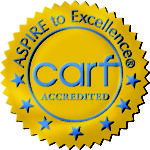It's not how much we give but how much love we put into giving.
Mother Teresa Tweet
Plan-It Life invites you to join us in helping prepare our youth to reach their greatest potential. Every contribution, regardless of the gift level, is critically important to our work. And we take our stewardship of your gift seriously. By making a gift, you enable Plan-It Life to serve even more youth. And you show them that there are generous individuals in the community who care about their success.
Your donations to Plan-It Life are used to provide for the needs of the youth in our homes.
The assurance of ongoing revenue from recurring gifts empowers Plan-It Life to reach more youth.
Give by Mail
Prefer to send a check?
Please include “Donation” on the memo section of your check and mail your check to:
6235 River Crest Drive Ste N, Riverside, California
Give by Phone
Please call us at (951) 653-7561.
Please have your credit, debit or electronic funds transfer information ready.






Plan-It Life, Inc. is a non-profit 501(c)(3) residential treatment center for at-risk youth, ages 12 -18. Plan-It Life, Inc. was founded in 2001 by CEO/ Administrator Shelia C. Marshall -McLean, LMFT, a Clinical Psychotherapist with a passion for fostering growth and self-awareness in youth. Mrs. McLean envisioned a safe haven where abused and/or neglected teens could come to learn social skills, decision-making skills, improve their education, receive anger management and therapy, as well as assistance in transitioning into the next phase of their lives.



